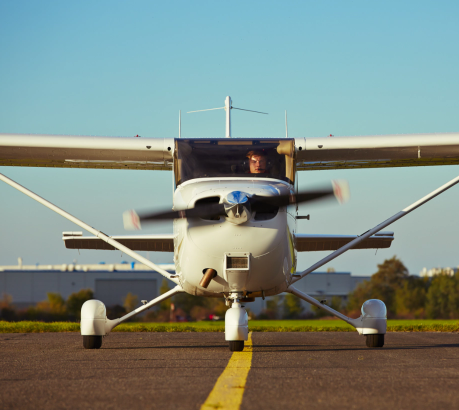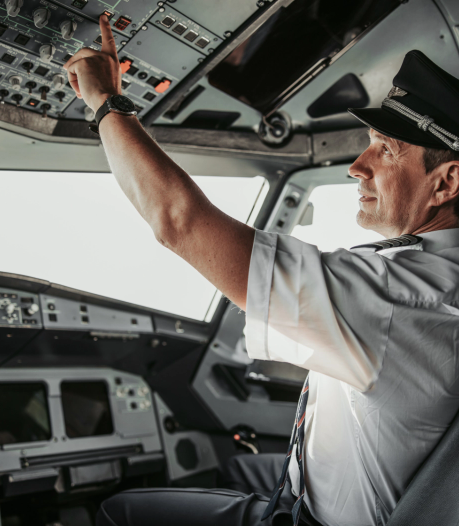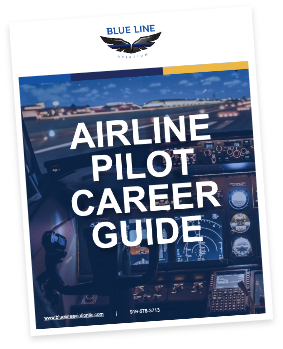Launch your Career
Airline Career Pilot Program
Becoming a pilot opens many lucrative career opportunities, from flying passengers for major airlines to flying private passenger aircraft or flying cargo. Beginning the journey as a Blue Line student pilot is the secret sauce for making your airline pilot career take off. Our training program gives you the needed flight time and allows you to pursue additional training and exams, all while earning a reliable and comfortable income. Hear from our graduates.

The age requirements
Student Pilot: 16+ years old
Commercial Pilot: 18+ years old
Airline Transport/Career Pilot: 21+ years old

Flight time requirements
Airline Pilot: 1,500 hours

The exam requirements
Commercial Pilot: Knowledge, Practical
Career Pilot: Knowledge, Practical, ATP, CTP
What it Takes
The Path to Becoming a Pilot
Embarking on the journey to become a pilot is a dream that many hold dear, and our Career Pilot Program is here to make that dream a reality, both swiftly and affordably. Imagine completing your training in just 5.5 months and taking to the skies as an airline pilot in as little as two years. We are committed to guiding you from your very first flight to becoming a skilled multi-engine instructor, all while maintaining the highest standards of education and testing. For our graduates, aviation offers a remarkable opportunity: the chance to recoup your training investment within just a few years, and then soar into a career where a six-figure salary is not just a possibility, but a likely reality.
1
Become a Private Pilot
The majority of pilots in the U.S. are private pilots, and all pilots who go on to make a career out of flying start out as private pilots. While private pilots cannot fly for compensation or hire, they can carry passengers so long as they have the appropriate flight experience and training.

How to do it?
1. Research schools and training programs
2. Visit schools and complete an introductory flight
3. Apply for the FAA Medical Certificate (be sure to use appropriate resources to do this wisely- avoid substantial delays in approval. Ask us how!)
4. Apply for the FAA Student Pilot Certificate
5. Pass an aeronautical knowledge exam
6. Complete our FAA Approved Private Pilot Course
7. Complete our End of Course Exam
2
Become a Commercial Pilot
Commercial pilots have abundant opportunities. Whether you choose to fly for a major airline, a regional airline, pursue private aviation, or fly cargo, the sky is the limit. Earning more certifications and ratings as a pilot means more career opportunities and paths are open for you.

How to do it?
1. Add instrument rating: After becoming a private pilot, the next step is to earn an instrument rating which allows a pilot to fly under Instrument Flight Rules (IFR) and in all kinds of weather.
2. Earn a Commercial Pilot Certificate: Pilots must meet specific experience requirements and fly to a higher standard in order to become commercial pilots, which ultimately allows them to legally be paid to fly.
3. Earn a Flight Instructor Certificate: Becoming a Certificated Flight Instructor (CFI) allows pilots to earn a living flying while they earn the flight experience required by the airlines.
4. Add multi-engine rating: Adding a multi-engine rating to the Commercial Pilot Certificate is the final step to fly large passenger airliners before building experience to meet hiring minimums.
3
Gain Experience
Become a flight instructor, cargo pilot, EMS pilot, or similar jobs to gain the type of quality and relevant flight experience necessary to meet the requirements of the Airline Transport Pilot (ATP) certificate. Upon completing the requirements of the ATP certificate, you will meet the hiring minimums of most regional airline pilot jobs.



